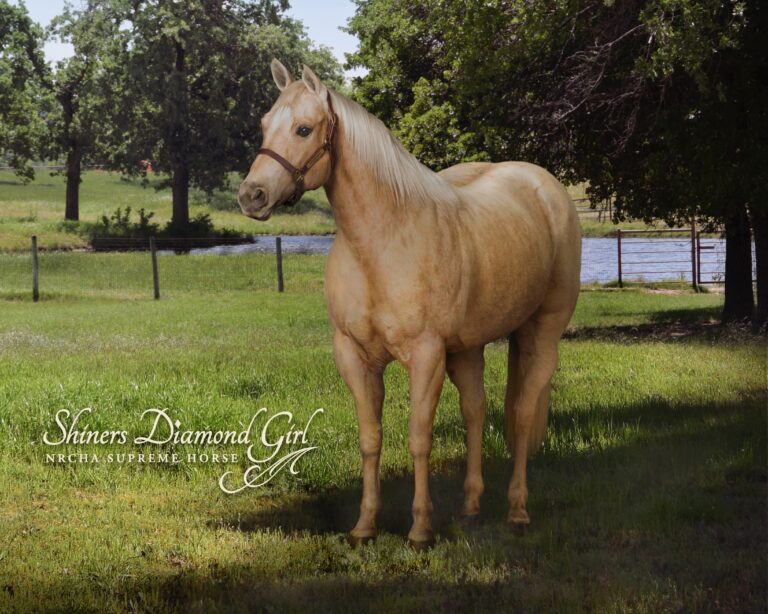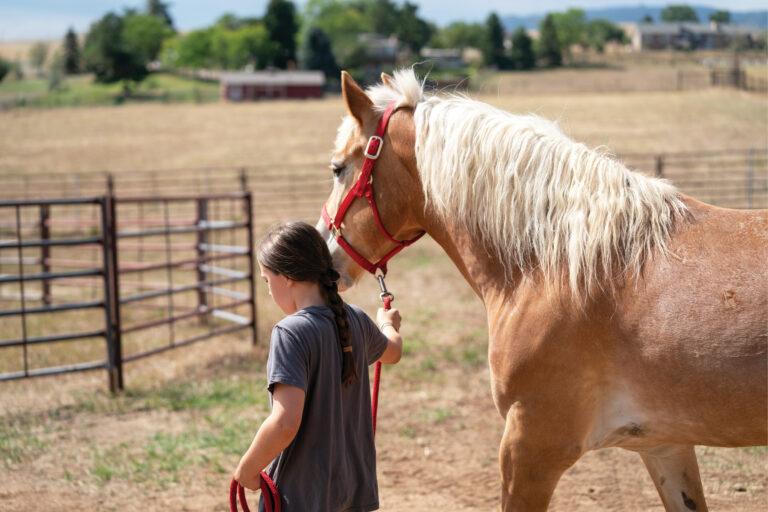Do you wish you had more time to spend with your horse? Do you struggle to balance work, family, fitness—life in general—with your riding goals? Do you often wonder how others arrange their schedules to accommodate their horse habits?

So do we, to be honest. Seems everyone’s in the same overloaded boat these days. So we did a little digging, and we’re going to share what we found—innovative approaches to finding and making the most of time from a number of highly resourceful horsewomen. Though their life situations vary, they share a common goal: to stay in the saddle and keep progressing.
We’ll tell you how they do it, plus provide a summary checklist of great time-finding and -enhancing tips. So, if you’re serious about improving both the quality and the quantity of your riding life, read on.
List Mania
Maureen Underwood of Krum, Texas, is a human resources director for Starbucks, in charge of 17 south-central states. Her job requires long hours and frequent travel, “every other week at least,” she says.
Still, the 50-year-old single horsewoman manages to train two evenings a week plus weekends with Paul Lentschke, the assistant trainer in charge of non-pros for Liz and Clint Haverty, also of Krum. Maureen is currently showing her 4-year-old gelding, Wall To Wall Whiz, in non-pro and amateur classes in National Reining Horse Association and American Quarter Horse Association competition. She typically shows from eight to 12 times a year.
Maureen also occasionally rides two broodmares and a retired reiner she has at home, and works with a yearling she’s bringing along. She says two words explain her success as a multitasking equestrian: plan and list.
“I’ve always been extremely organized, in all areas of my life,” she says. “For my horse life, I work with my trainers to set yearly goals and select shows, then I schedule my vacation time at work around those shows.
“On a daily basis, I live by a list. I make one every morning, then tweak it during the day as things come up. That way, I’m able to combine tasks and avoid time wasters, such as having to make an extra trip out to the supermarket or feed store.”
Maureen also enlists the help of her horse-owning neighbors to cover for her while she’s gone. “We trade off, so I help with their horses when they’re away from home.”
An understanding trainer also is essential to her success. “If you can ride only on Tuesday and Thursday evenings, he or she needs to be willing to accommodate you,” she explains. “You need an environment that works not only in terms of cost, but also in organization and attitude. The Havertys and Paul are wonderful.”
Because her previous jobs required her to relocate several times, Maureen has experience finding trainers. She recommends a systematic approach.
“Get feedback from your friends in the horse world about trainers they know,” she advises. “Talk with several trainers about your needs, such as their hours, their degree of flexibility, whether or not they have lights for evening work, if necessary, what shows they go to, and who will be working with you. Take the time up front to make the best choice possible, and it’ll save you lots of time in the long run.”
A Family Focus
Ginger Boulger of San Diego, California, is a single, self-employed mother of 10-year-old twin girls. She makes her horse life work by involving her daughters and maintaining a high energy level herself.
“I believe in the saying, ‘You’ll sleep when you’re dead,’” says the 45-year-old CPA with a laugh. She adds that physical fitness and “willpower” help keep her going when she’s working before seven A.M. and, occasionally, after midnight.
Ginger and her daughters share two Quarter Horse geldings, both 6. Ginger, who trains with Roslyn Proffer in Ramona, California, has just started reining; she was the “green rider” winner after two local open shows. Her daughters have shown the past two years in Western pleasure and trail under Sandy Arledge, and are now getting into reining as well.
“On the afternoons I ride with Roslyn—usually two a week—I have a babysitter bring the girls out to Roslyn’s after school, and they ride, too,” says Ginger. “On the days I don’t ride, I try to get some exercise, or handle other things on my ‘to-do’ list, plus get an extra hunk of my accounting work done. When I can’t work out any other way, I use a Pilates tape early in the morning.”
She adds that the girls are a part of her finding-time solution. “They pitch in on household chores to help ‘pay’ for the luxury of riding,” she says, noting that they also multitask by doing their daily reading on their way to the farm. Still, choices—and sacrifices—have been necessary.
“I used to be a gardener; now my garden is full of weeds,” she says ruefully. “I’m still involved with PTA at my daughters’ school, but I’ve given up coaching soccer. The girls are still playing soccer, but we’ve cut out Girl Scouts and piano lessons—I mollify myself with the thought that they’re learning to play clarinet in school.
“On weekends, we usually don’t go to movies or the beach—and the ocean’s only a few blocks away,” she adds. “Horses are our main recreation, period.”
Weekend Warrioring
Margie Franz of Salem, Oregon, makes her horse life work by concentrating it on weekends. The 56-year-old married Appaloosa enthusiast has two jobs: She works fulltime in the Elections Division of the Oregon Secretary of State’s office, and she owns Cascade Quilting, which produces blankets, quilts, Christmas stockings, and other items with equine motifs.
Despite a 40-hour workweek, early-morning quilting, and four trips to the gym per week, Margie regularly shows her gelding, Grant Me A Zippo, in Appaloosa competition. “In odd-numbered, non-election years, I go to about five or six breed shows plus the Appaloosa World Show in Fort Worth. In even-numbered election years, I scale back a bit, and I don’t make it to the World Show.”
Margie nabs this much time in the show pen by keeping her horse in full training at McCullough Training Stables in Forest Grove, Oregon, and riding exclusively on weekends.
“I have a camper shell on my truck, and I take my sewing machine with me,” she explains. “I spend the whole weekend with Shannon [Verdier] and Erin [McCullough], and in the odd moments I’m not riding Grant, I work on my quilting projects.” Her trainers keep her horse tuned during the week and haul him to shows for her.
Margie, who’s currently taking time off to recover from surgery, says she competed even more when her daughter, now 29, was home and showing, too. “When I retire from my state job,” she adds, “I plan to ride and show more than I am now.”

YOUR ‘MAKE-IT-HAPPEN’ CHECKLIST
Here’s a summary of the most important points we gleaned from the amateurs in this story, plus others we talked to:
Get motivated. Write down all the potential benefits you derive from riding (and showing, if applicable). Examples might be pure enjoyment, stress relief, enhanced self-confidence, enhanced fitness, social contacts, family fun time, and so on. This exercise will motivate you to go on and tackle the rest of the tasks on this list.
Be realistic. You really can’t do it all—at least not all at the same time. If you ride and show, have a career and/or family commitments, and keep yourself reasonably fit and healthy, you probably won’t have time for other “discretionary” pastimes, such as non-horse sports and hobbies, social activities, and things like recreational shopping. If horses are what “fill your tank,” then that’s where you must choose to spend your discretionary time (and dollars).
Get organized. Use a day planner, Palm Pilot (or some other personal digital assistant—“PDA”), or even simple written lists to track and structure your time on a daily, weekly, and monthly basis. If you’re not already time-management savvy, get a book or audiotape on the subject (find zillions at www.amazon.com) or explore training programs, such as those offered for the popular Franklin Planner system (www.franklincovey.com).
Multitask. Whenever possible, combine the essential elements of your life. Hand-walk your horse as a warm-up, and horse time becomes aerobics time. Involve your children (or grandkids) in showing, and horse time becomes family time. Develop a horse-oriented side business, and show time becomes work time. Be creative.
Avoid time sinks. Discipline yourself not to waste time in activities that don’t contribute to your life plan, including television watching, phone chatting, recreational e-mail, and Web-surfing. Use a small, portable kitchen timer to limit the time you do devote to such pursuits.
Give yourself an edge. Ride the best horse you can afford, and work with a trainer, if possible. If you can manage to have your horse in full training, so he stays tuned up, better still. If finances won’t allow that, then consider sharing your horse with a like-minded friend, or half-leasing someone else’s good show horse. That way, you reduce your time burden without compromising your competitive potential or feeling guilty about the horse not getting enough work.
Stay sharp. Increase your energy level and mental alertness by eating healthfully, staying in shape, and carving out quiet time to think, plan, and reflect on a regular basis. Balancing the elements of your life is challenging work. Stay up to the task to avoid burnout.
MORE BUSY RIDING TIPS






